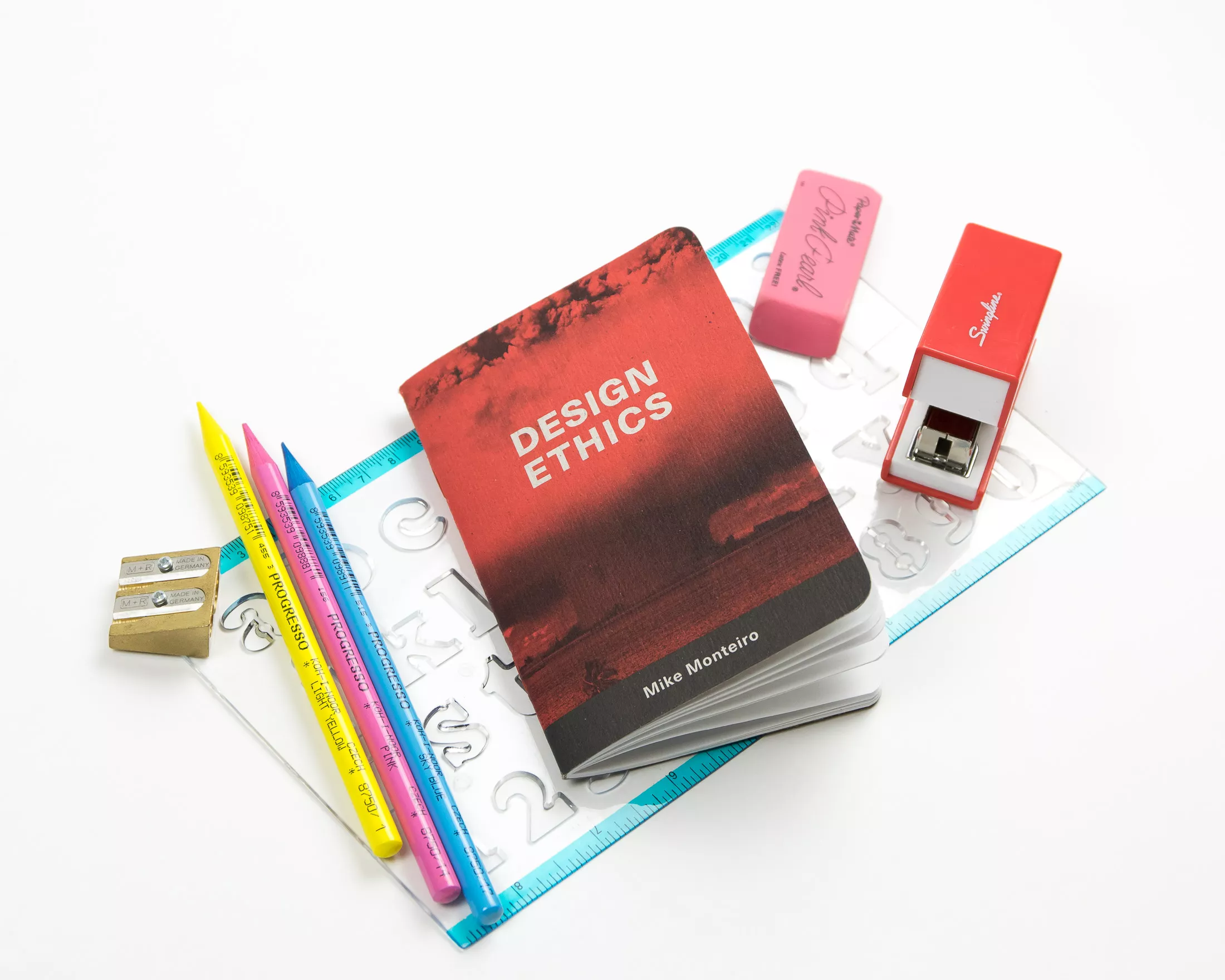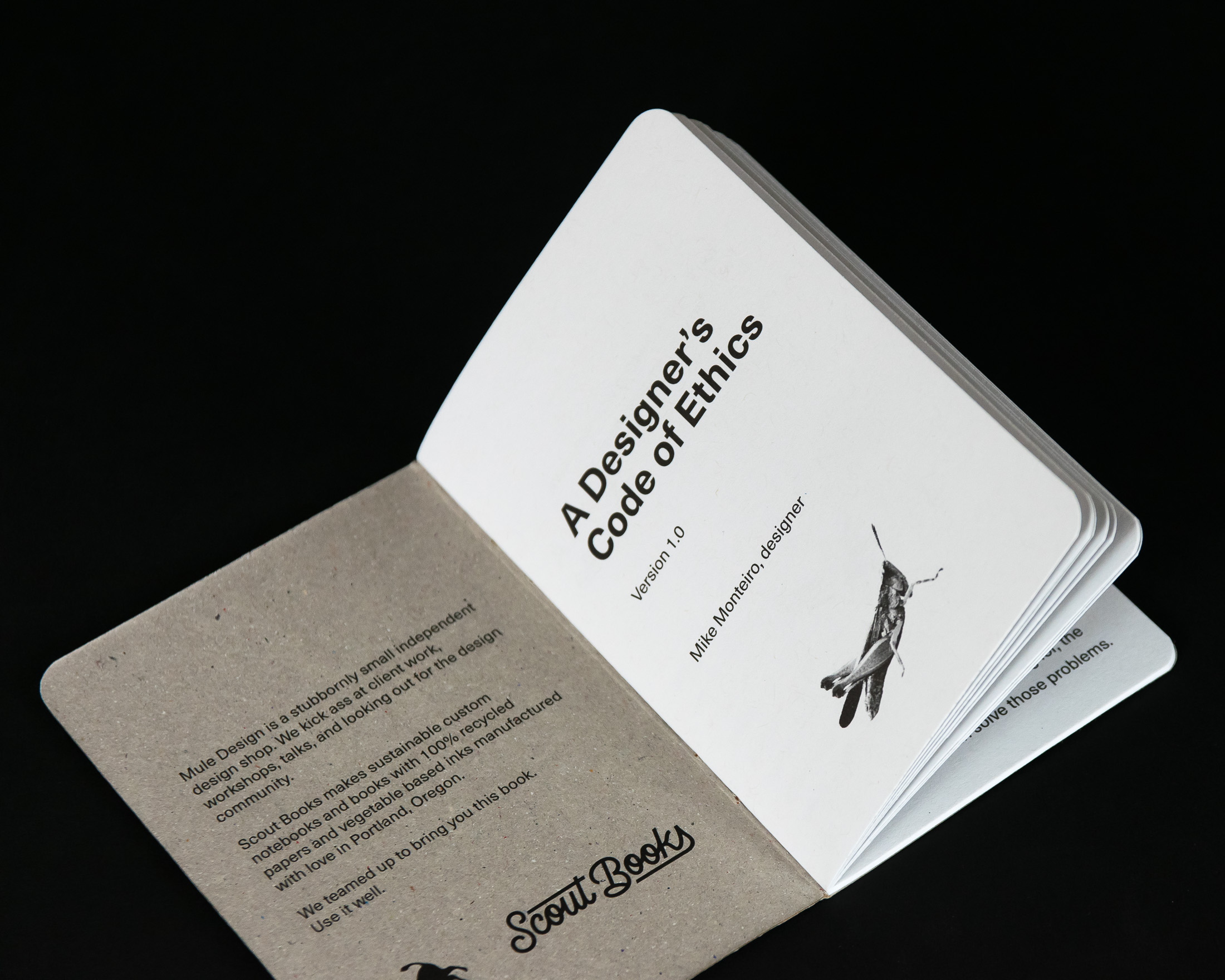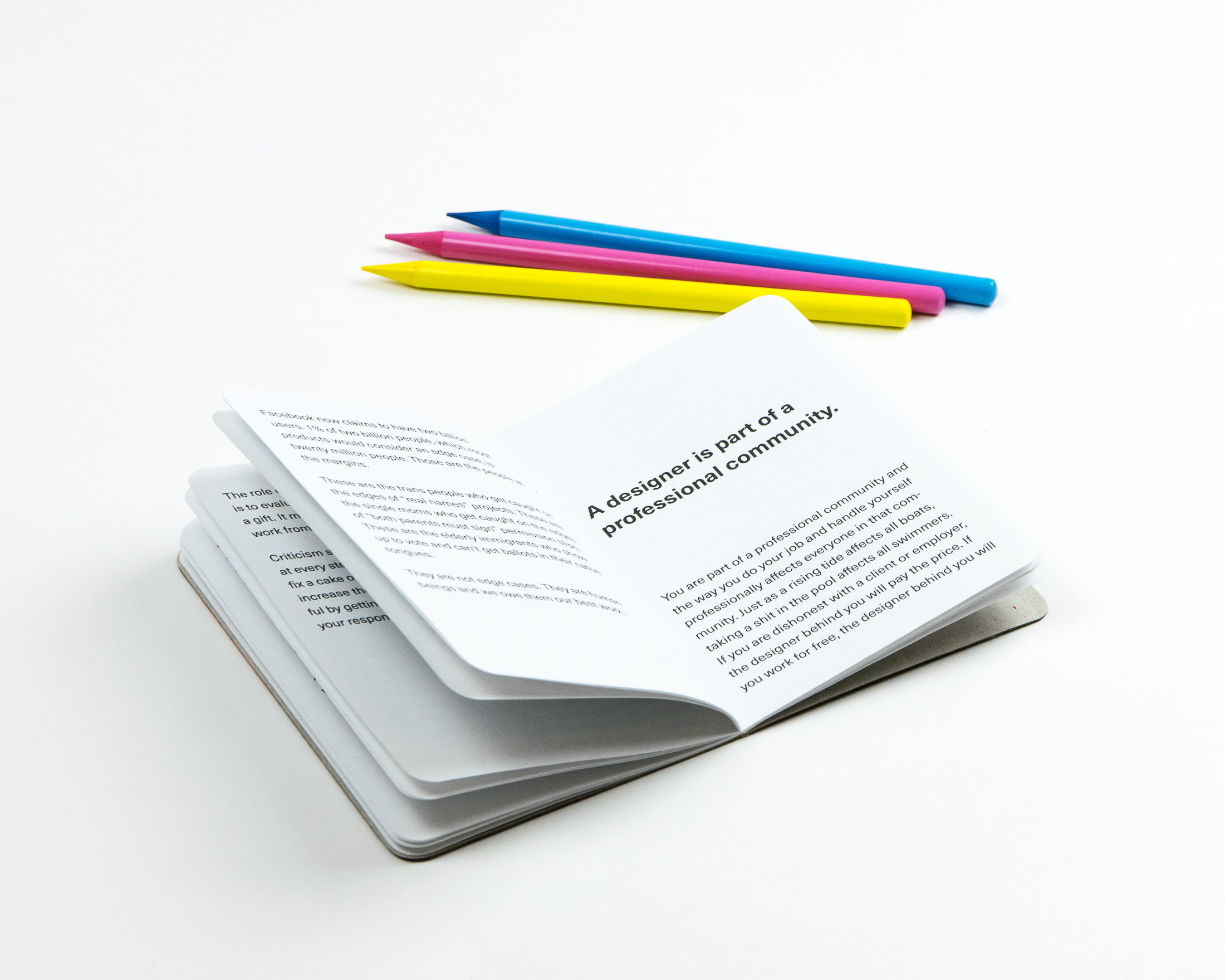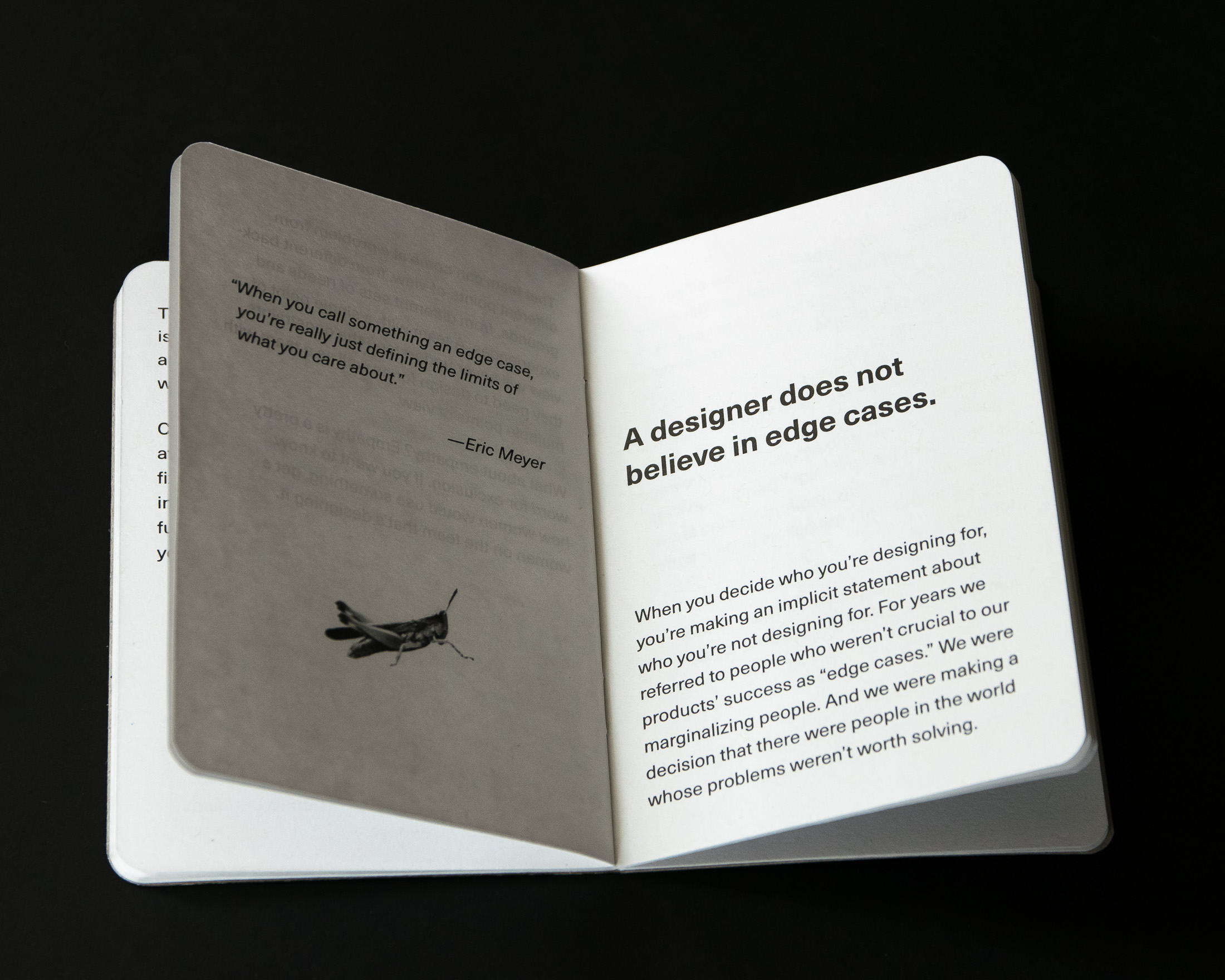We recently teamed up with Mike Monteiro of Mule Design to publish this book on design ethics. As the products and services we use every day become more clever and deeply infused in our lives, there’s never been a more important time to consider what we are designing and how. Mike Monteiro has been one of the most outspoken voices in this discussion, through talks and through the blog Dear Design Student. We wanted to get Mike’s thoughts on the state of design, and why the ethics of it are more critical than ever, so we asked him a few questions.
This book started with a Medium post, A Designer’s Code of Ethics. What was the original impetus for creating that?
Well, we didn’t have one! Honestly, I went looking. I thought, surely, a profession that can cause so much damage has a code of ethics. Lawyers, doctors, architects, journalists. All these professions have a code of ethics. Basically, anything that’s recognized as a profession has a code of ethics. Even if it’s unwritten. We all agree it would be unethical for a baker to sell you stale bread. It would be unethical for your mechanic to cut your brake lines so you’d have to come back for another visit. All professions have ethics. But from how I’ve seen designers behaving, I began to wonder if they were aware of their own code. It’s not something that’s taught in school.
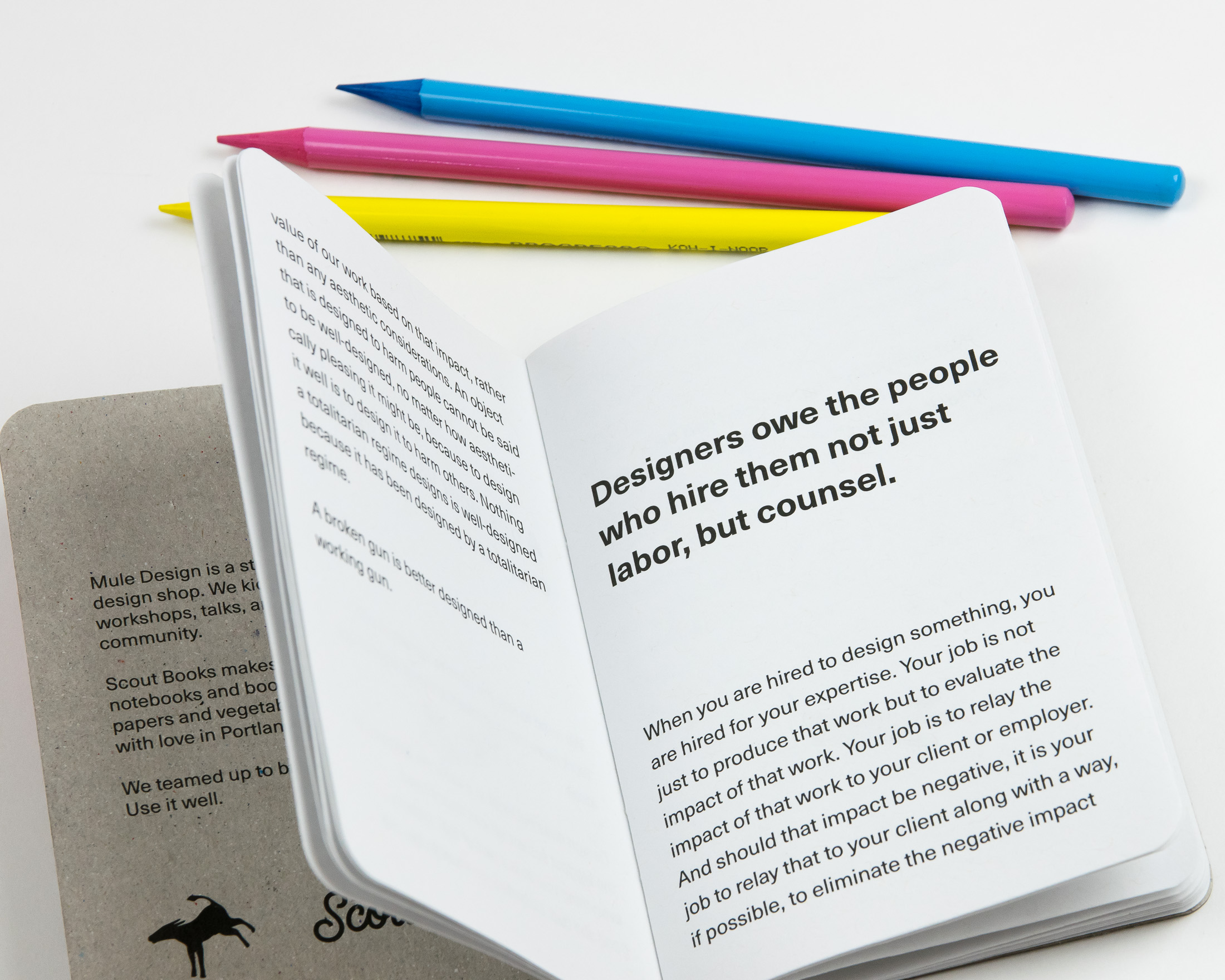
That post has now become a book, which we published together. How are you going to be using the Design Ethics books?
Scout Books was nice enough to partner with us on the initial run, so we’re giving those away. Send me a self-addressed stamped envelope and I’ll send you one. (80 Fresno, SFCA 94133). We’ll do that until we run out. Then we’ll probably start selling them, because neither of us are made of money and you can’t keep printing them for free. And we’ll need a way to recoup the cost of making more. The demand has been great. And it warms my heart that people care about this stuff.
How is design different in 2017?
Digital design (whatever we might be calling it this week) is still a fairly new field. But it’s a field that has ramped up dangerously fast. We’ve gone from designing Myspace skins to interfaces that track and manage intimate human relationships in a very short span of time. We’re designing stuff that can get people killed. So yeah, it’s time for ethics to come to the forefront.
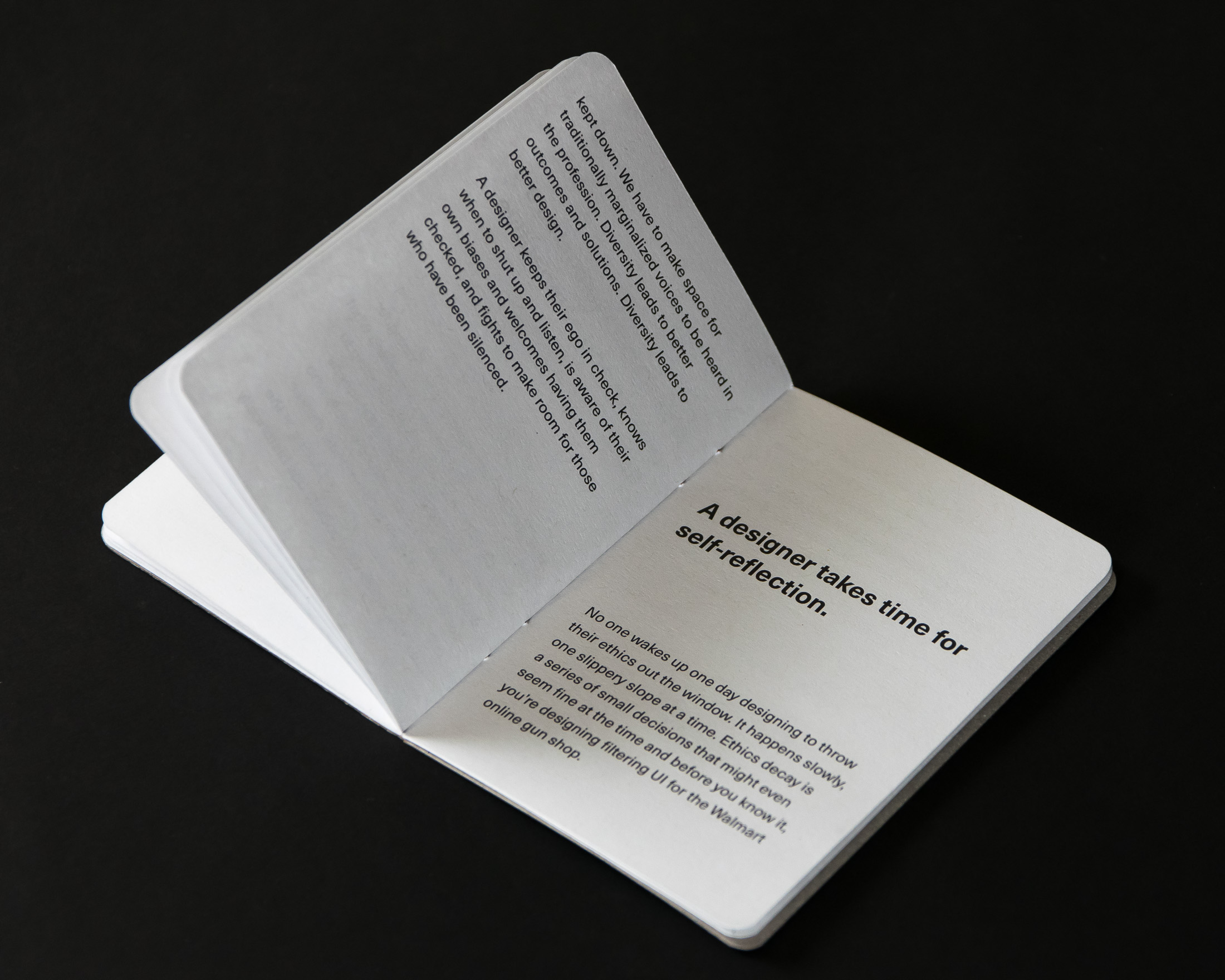
What is design getting wrong these days, and what is it getting right?
I think design is caught in the same “holy shit now what?!?” moment as everyone else. We’ve come a long way in explaining the value of good design. Companies no longer think of it as an add-on, or an investment (remember all that god awful ROI crap?) but as a cost of doing business, and a requirement to being successful. So congrats designers! We made the team! Now that we’ve convinced people of our value, and gotten a seat at the table, we need to understand our responsibility. We’re gatekeepers, man. We’re the people who make things. And decide what gets made and how it gets made. And we have a responsibility to make sure things are being made well, and for the right reasons. We’re also responsible from keeping things that are being made to hurt people from seeing the light of day.
Do you have an ideal client?
My ideal client is someone who wants to make the world slightly less shitty. Whether they’re doing it in big ways, like providing resources for refugees, or little ways, like printing delightful little affordable books that make people smile… all that shit is good. If you want to give people hope, especially people who need it most, I’m on board.
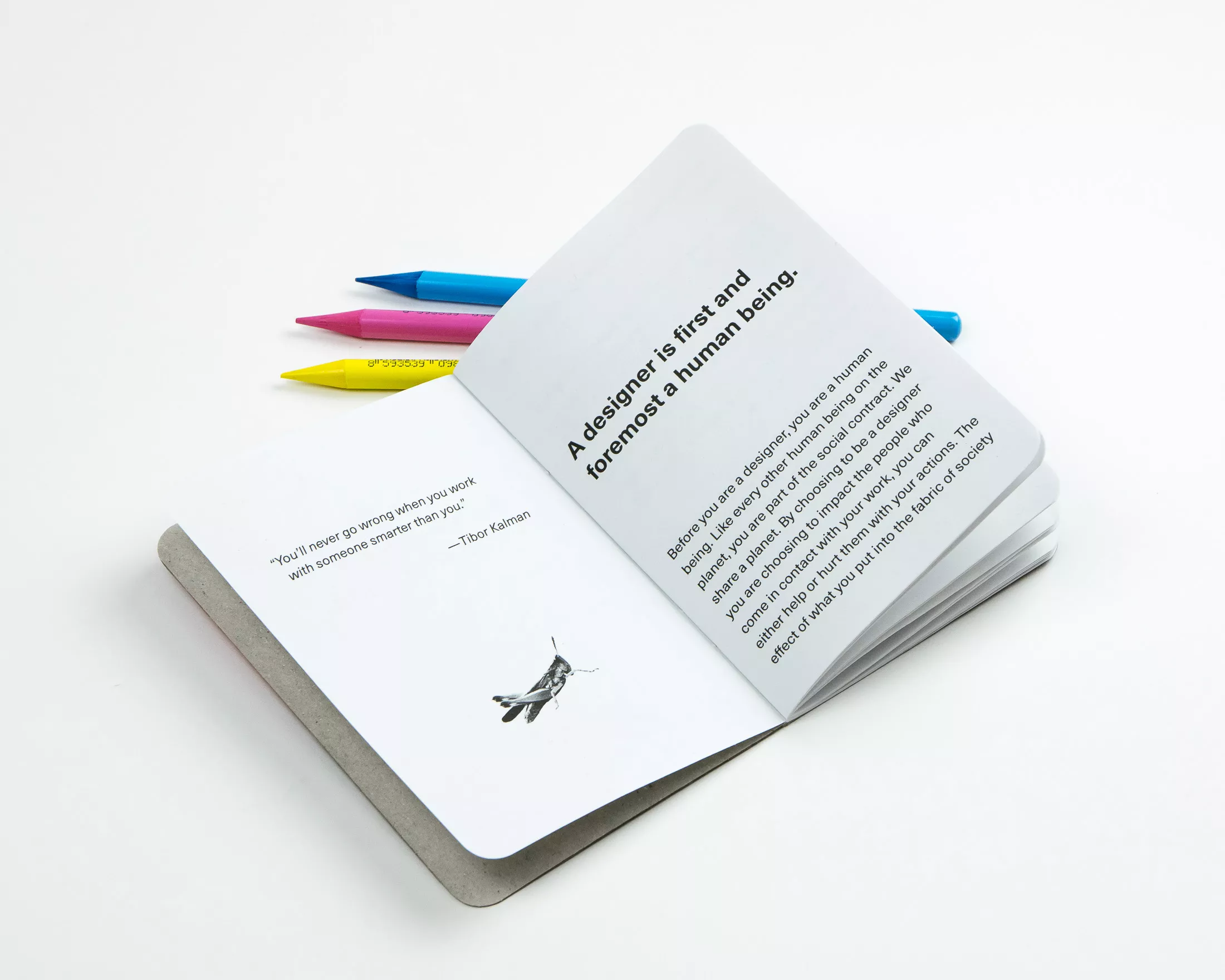
There’s been a surge of designers volunteering their time and efforts to causes or organizations in the past year – where’s the line between working for free and contributing to causes that need our skills?
I don’t understand why designers argue about working for free so much. You wanna work for free? Do it. Here’s what really matters to me: you can’t spend your day working at a place like Uber, that systematically undermines the poor people who drive for them, and treats women like shit, and then go put in a few hours at your local food bank to make up for it.
Nothing you do in your volunteer time will make up for working unethically in your day job. Nothing. Fix the shit at your day job first. That’s the job.
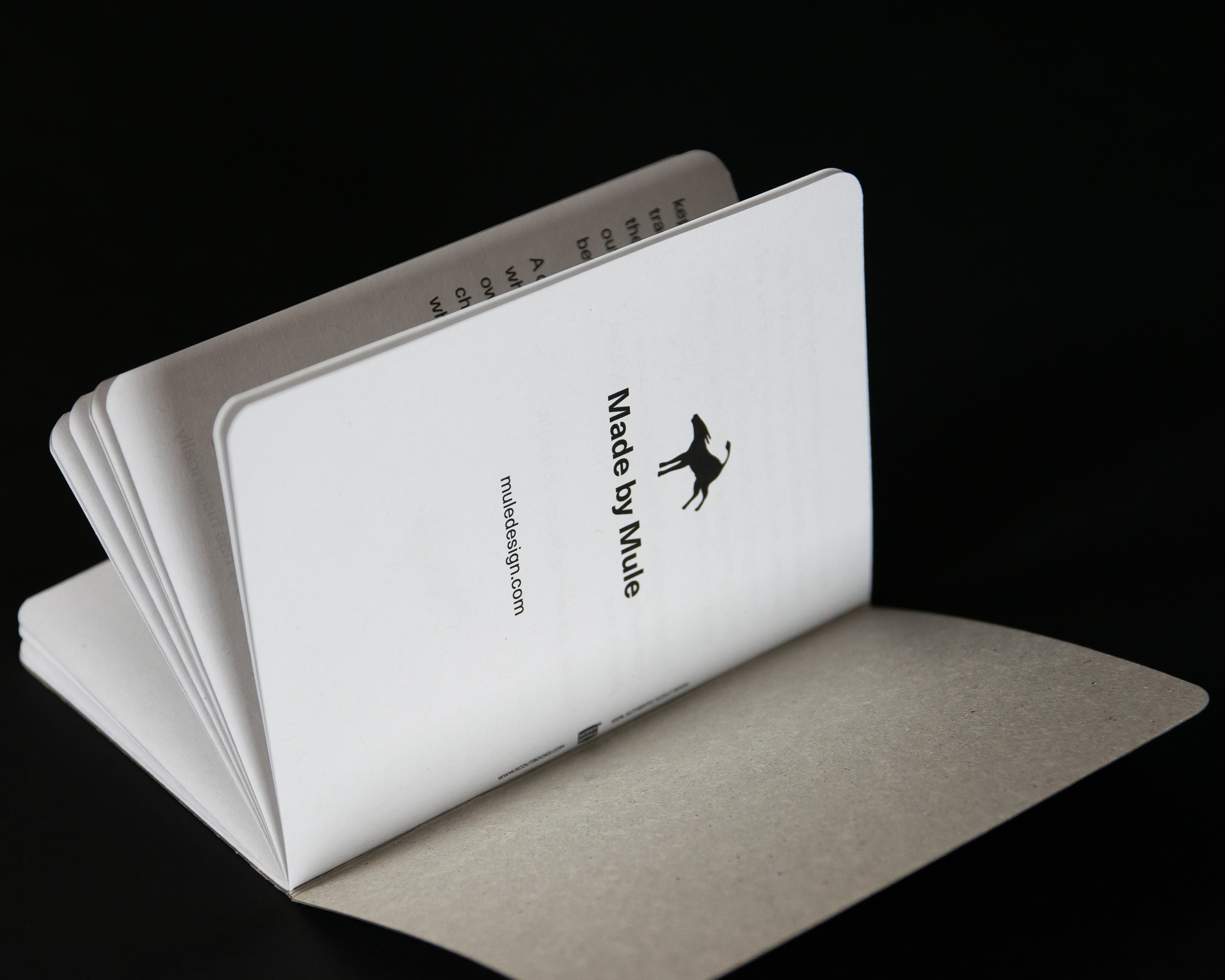
You recently wrote about fighting fascism, then about design ethics. What’s next?
Well, I think if I’ve managed to overthrow fascism and install my profession with a sense of ethics, I get to call it a day, right? I mean that’s a pretty good obituary right there. I’ll probably be hammering away at these points for a bit longer.
But when I’m done, well… I’ve always wanted to raise goats.
Thank you Mike for taking the time to speak with us. To read more of Mike’s thoughts on design, follow him on Twitter and Medium, where he recently posted on how to get one of the Design Ethics books featured in this case study. Now go make the world a better place!


